How could Derbyshire's political map change?
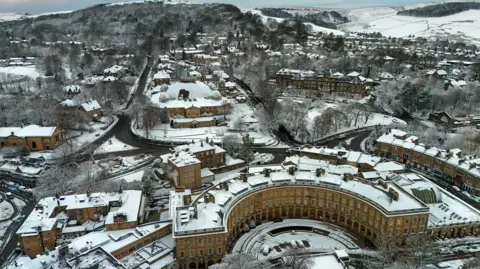 PA Media
PA Media"It's a waste of money and doesn't make sense."
That is one particularly unsentimental attitude one Derbyshire MP expressed to me about the county's current patchwork system of local government, made up of several hundred councillors stitched together via different types of local authorities.
It seems the government now agree with him - with big changes on the way.
In December, the government published plans to merge areas where there are currently more than one tier of local authority - like Derbyshire.
The English Devolution White Paper also opened the door to boundaries being completely redrawn, and made clear that ministers favour single-tier, or unitary, structures.
Last week, Derbyshire's district and borough council leaders penned a joint letter to the government calling for clarity amid concern about the plans.
One of the leaders, Steve Flitter, of Derbyshire Dales District Council, told the BBC: "Local people should be dealing with local issues and this is not going to help that whatsoever."
But clarity could take a while to emerge - particularly given local leaders are far from unanimous on the shape the county would take.
So what could the options look like?
The status quo
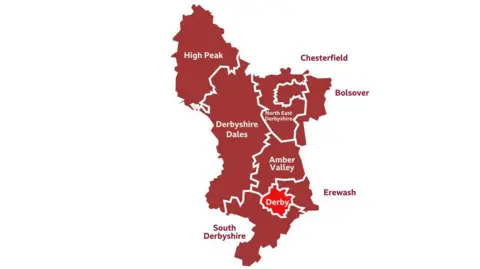
At the moment, there are two different systems depending on where you live.
The city of Derby itself is run by Derby City Council.
It's been a unitary authority since 1997, meaning it is in charge of all council services in the area it covers.
Elsewhere, however, there is a two-tiered system.
Derbyshire County Council is in charge of some services - like social care and road maintenance - while smaller district and borough councils take care of things like bin collections and leisure centres.
It is this mishmash of a system that the government thinks should be streamlined.
It also claims that cash-strapped authorities like Derbyshire, which are buckling under the costs of highly pressurised areas like social care, could save money by doing so.
The current Conservative leader Barry Lewis has warned that councils like his risk becoming "little more than care authorities" without government action.
Including the city, there are nine councils in total - not including town and parish councils - each with a chief executive and a headquarters.
But we know that the government is not happy with the status quo.
A 'super council' - excluding Derby
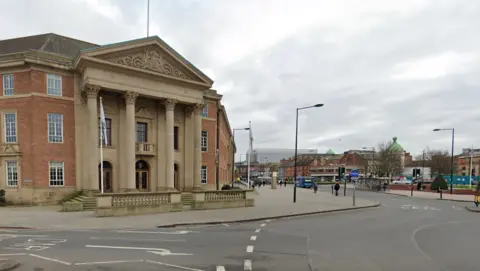 Google
GoogleThis would see Derbyshire merge with districts and boroughs to establish a single-tier authority covering county boundaries, with Derby City Council maintaining its existing boundaries.
It is the favoured option of the current leader of the county council, Barry Lewis, who sent this plan off to the government swiftly in the hopes that Derbyshire will be considered among the earlier cluster of councils who merge.
However, he faced criticism for doing so, not least because it could mean the local elections are postponed in May.
The city is planning to put forward its own blueprint in the coming weeks.
One sentiment that many Derby councillors have expressed to me is a reluctance for the city becoming a "doughnut" surrounded by a Derbyshire "super council".
So it is no surprise the city's Labour leader, Nadine Peatfield, pointedly told me: "It's really important that we come to our conclusions together."
A county-wide 'super council' - with Derby
This would see Derbyshire not only merge with districts and boroughs, but swallow up the city council too.
But some MPs have told me they are concerned about the previous "super council" proposal being too large as it is, which would take in more than 800,000 people.
Adding Derby into the mix and its population of about 260,000 would mean well over one million people being represented by one council.
The government wants newly-merged councils to serve about 500,000 people as a minimum.
It has been done before though. This is pretty much the model that used to be in place before Derby became its own entity in 1997 - albeit with a smaller population and far fewer demands on its services.
A bigger city
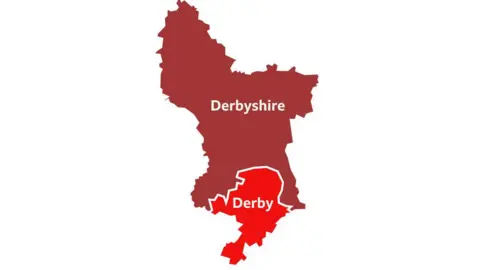
One idea is to expand the city to take in some of the adjoining suburbs.
We do not yet know where the boundaries would be drawn, but I am told that taking in South Derbyshire, as well as bits of Amber Valley and Erewash, is a popular option that is being considered.
The government has indicated it is open to the idea of redrawing boundaries in this way.
It would also help the city when it comes to boosting its income through council tax, which it currently struggles to do given the low collection base provided by the type of houses Derby mostly has.
There is also an argument that it is areas like Amber Valley, on the outskirts of the city, where many people benefit from the city's resources without paying into the system, given they fall outside the boundaries.
Demands on housing from a government prioritising building more homes will also be made easier if Derby has more land to play with.
A north and south Derbyshire

This would effectively involve splitting the county in two.
Chesterfield, High Peak, Bolsover, North East Derbyshire and the Derbyshire Dales could combine to create a unitary authority in the north.
Derby city, Amber Valley, Erewash and South Derbyshire could then merge in the south.
The former Conservative leader of Derby City Council, Chris Poulter, has argued for this option before, and told me recently he still sees this as the "logical option".
But it was not so popular with other leaders when it was mooted at the time.
Something else?
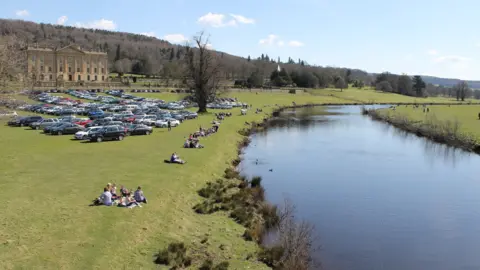
While the above options are seen as among the most realistic, there is plenty of room for other ideas to emerge - and some are already taking a different approach.
A suggestion from the Labour MP for High Peak, Jon Pearce, that the area could combine with Greater Manchester councils has sparked fierce debate locally, and criticism from the area's former Conservative MP.
It is seen as unlikely, given the government is said to be unenthusiastic about messing around with the boundaries of the recently established East Midlands Combined County Authority. The East Midlands mayor, Claire Ward, is also understood to be opposed to the idea.
Similar noises have been made about Chesterfield leaning towards Sheffield, seen as unrealistic for the same reasons.
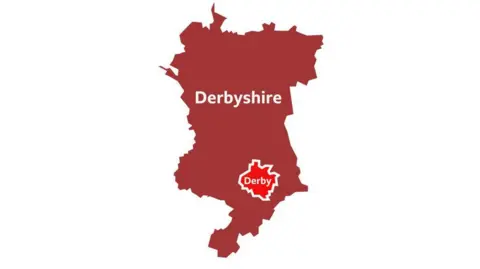
So what now?
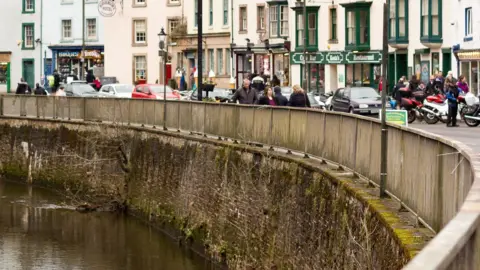
It is still early days and until a final decision is made - hoped for by the end of 2025 - we are stuck with hypotheticals.
But things are moving quickly.
While it is thought that Derbyshire will not be seen as a priority for reorganisation compared to other areas that still for example, do not have a mayor in place, there is an expectation for interim plans from all councils to be submitted by the end of March.
More detailed proposals are then due to be drawn up by the autumn, with the new structure implemented in 2027 or 2028.
Shadow elections would probably be held in 2027 if Derbyshire County Council has its elections postponed.
But things have not exactly got off to a harmonious start for Derbyshire's council leaders.
Which begs the question - with so many competing visions and interests, at what point does harmony break out?
Follow BBC Derby on Facebook, on X, or on Instagram. Send your story ideas to [email protected] or via WhatsApp on 0808 100 2210.
